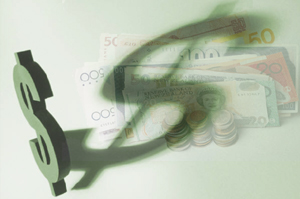|
|

|
Credit - Other Peoples Money There are two kinds of credit. One is consumer credit, the other is investment credit, often referred to as leverage. Consumer credit Consumer credit usually credit cards, car loans, home loans, etc. If used properly and with forethought consumer credit can be useful and has a place in most people lives. When it is misused it can be very destructive to your personal finance and may lead to personal bankruptcy. Credit is easy to get, expensive to use, and easy to misuse. People who use credit cards as opposed to cash have been shown to spend 23% more on everyday shopping trips, The Peoples Almanac, Doubleday & Co. 1975. It is easy to see how this can lead to trouble. Signs of credit problems:
Building or rebuilding credit: It is important, especially to an investor, to have and be able to show a good credit history. If you have had poor credit on have never established credit you can begin to establish a good credit rating with little money or risk by following the procedure outlined below. This will not erase a poor credit history but it will go a long way to help reestablish creditability.This procedure uses the concept of secured credit . We will use a savings account to secure a new credit card. Banks will often issue a secured credit card to anyone provided that they have an offsetting savings account pledged for the cards repayment.
Leverage - the business application of borrowed money to either make an investment, or to increase your return on your out of pocket cash. Often referred to as Other Peoples Money, or OPM for short. Lets look at an example of this concept of leverage. In this exercise you use all cash, no leverage. Imagine you have one-hundred thousand dollars cash to invest in an opportunity. Scenario One - you invest all $100,000 in cash, and later sell for $110,000. You have made $10,000 profit ($110,000 sale price - $100,000 investment), a ten percent return. Scenario Two - you invest the same $100,000 but your investment consists of $10,000 of your money and $90,000 of borrowed money (leverage). You sell the same investment for $110,000. You make the same $10,000 profit ($110,000 - $90,000 repayment of loan less $10,000, your cash contribution) but your return has increased to a one hundred percent return. After paying off your loan (loan fees and interest ignored in this example) Your made a $10,000 profit and you only put up $10,000 of your own money. I repeat a one-hundred percent return! Now the bad news Leverage can also increase your risk consider the first scenario but in this example your investment instead of increasing by $10,000 decreased in value by $10,000. Your investment is now worth only $90,000. You lost ten percent of your investment. In the second scenario your investment decreased by the same amount but now you have lost one-hundred percent of your money. You still owe your creditors $90,000 plus interest. Not a god situation. The use of leverage can be and extremely useful tool, but it is important that it be used well. If consumer debt is spent for new toys and life style, it is misused. Spending begets spending. A new home also means new furniture and appliances. A new couch then new end tables and lamps to complement the couch Then painting to match the new furniture. New carpet to match the furniture and paint. Finally a new house to accommodate all the new furniture.. A raise used to increase life style feeds on itself and often outruns itself leaving its recipient often poorer after receiving a raise. Home - Table of Contents |